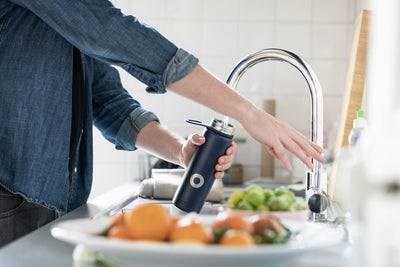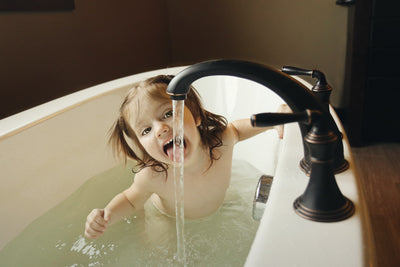Between 2016 and 2018, Chicago tap water regularly made the headlines as it was revealed that at least 30% of Chicago homes’ tap water had higher than recommended lead and chromium-6 concentrations.
Lead in tap water can lead to cardiovascular disease in adults and irreversible alteration of cognitive functions in children. It usually leaches from plumping, pipes, and fixtures.
Yet, as mentioned above, lead is not the only contaminant that was found in Chicago’s drinking water at the time. Indeed, high traces of chromium-6 were also found. Chromium-6 is an extremely toxic substance that has been proven to cause severe health issues, including cancer and liver damage.
In fact, in 2018, a report revealed that there are over 400,000 lead-related deaths a year in the U.S.
So, where does Chicago’s water come from?
What’s the city doing to ensure your drinking water is safe? And what can you do at your individual level?
To help you protect your health and that of your family, we’ve answered these questions below.
Where Does Chicago Water Supply Come from and What is the Water Treatment?
The tap water in Chicago comes predominantly from Lake Michigan, one of the biggest lakes in the world. The raw water is pumped directly from the lake and is sent to the two purification plants of the city so that it can be treated and impurities can be removed. It then flows to 12 different pumping stations spread across the city to be distributed to homes and businesses. At every point of the system, the water composition is tested and the purification process adjusted to make sure germs are killed.
The Bureau of Water Supply supplies approximately one billion gallons of water to the community every day.
What Steps is the City of Chicago Taking to Ensure Safe Drinking Water for the Community?
Recent research conducted between 2015 and 2020 has revealed that Chicago has more lead water pipes than any other American city. In fact, Chicago currently counts approximately 380,000 lead serviced lines.
At the end of 2020, city officials stepped up for the first time and announced a two-step program to replace these lines. Based on this new program, homeowners that are eligible (water must contain over 15 parts per billion of lead) will be able to receive funding for the replacement of their water pipes. A water kit will typically be shipped to them so that they can measure the levels of lead present in their tap water. The city’s department of water management will also take samples and send them to certified labs for assessment.
Based on the results, the pipes will then be replaced for free.
The main issue with this initiative, though, is its slow rollout. Indeed, the new law gives officials 50 years to replace all of the lead-affected service lines.
Studies have also shown that Chicago has some of the highest levels of chromium in the country. Companies such as US Steel use it as a coolant for their operation, and most of it, unfortunately, ends up in Lake Michigan.
Unfortunately, there are currently no guidelines regarding safe levels of chromium-6 in the water as explained in our article called ‘’What is Chromium-6 and how to remove it from your drinking water?’’.
How to Ensure Your Drinking Water is Safe?
Understandably, many Chicago residents are afraid of lead exposure and poisoning. You might even be one of them. The good news is there are ways to ensure your water is safe to drink even though you get your water supply from a lead service line.
- Use a Drinking Water Test Kit
Nowadays, you can find very inexpensive drinking water test kits to test the levels of contaminants in your tap water, including lead and chromium-6. They’re usually easy to use and come with a strip and a color chart. Insert the strip in a glass of water and let it dry on a paper cloth for a few seconds or minutes (follow instructions on the box). Then, compare the colors on the strip to the color chart provided and read the results. This will allow you to analyze what contaminants, if any, are present in your drinking water.
You can also send a sample of your tap water to a certified lab to get it analyzed for specific contaminants. You’ll find labs that are located near you on the EPA’s website.
- Invest in an Efficient Water Filter
The ultimate way to protect your family and yourself is to purchase a whole house water filter or a reverse osmosis water filter. Depending on the brand you choose, these filter systems are designed to remove the majority of harmful contaminants, including lead and chromium-6, ensuring your drinking water is purified and safe to drink. At Filtersmart, we locally manufacture high-quality whole house and reverse osmosis water filters that remove up to 99% of contaminants. We always source the best materials and use the best equipment to ensure that no matter the level of contaminants in public water supplies or private wells, what comes out of your taps is safe for your health.
Not sure what water filter is best for your home? Don’t hesitate to get in touch with us. We’ll be happy to discuss your current situation, concerns and needs to assist you.














